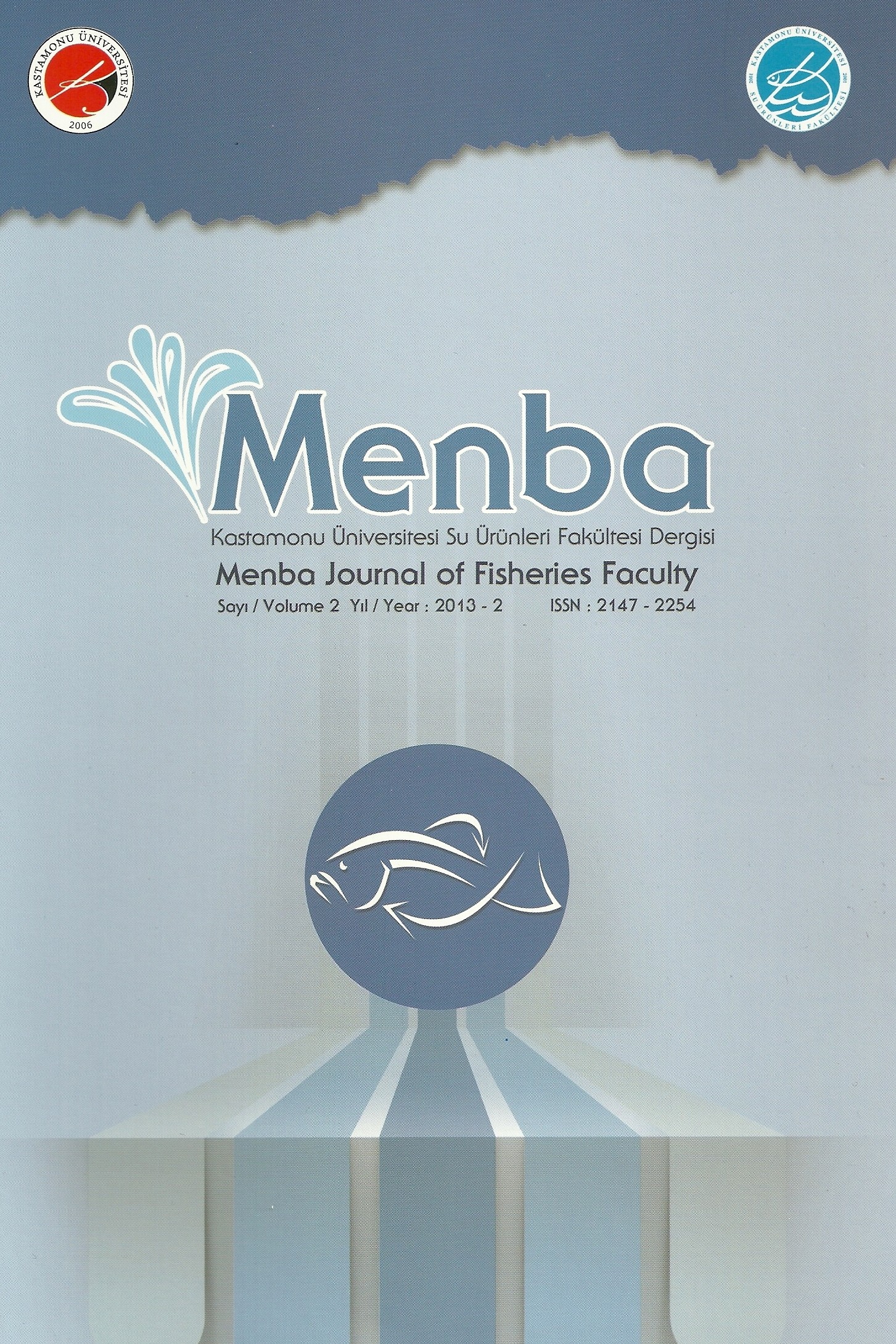Oğul Otu (Melissa officinalis) Ve Kişniş (Coriandrum sativum) Bitki Özütleri Kullanılan Gökkuşağı Alabalığı (Oncorhynchus mykiss) Yumurtalarının Kısa Süreli Muhafazası Sonrası Embriyolojik Gelişimin İzlenmesi Ve Yaşama Oranlarının Belirlenmesi
Bu çalışmada, dişi gökkuşağı alabalığından elle sağım yoluyla elde edilen ve ovaryum sıvısı içerisinde saklanan yumurtaların kısa süreli muhafazası (4°C) süresince farklı zamanlarda döllenme yetenekleri tespit edilmiştir. Deneme 3 tekerrürlü olacak şekilde dizayn edilmiştir. Sağımdan hemen sonra 0. dk, 1. saat, 2. saat, 3. saat, 4. saat, 5. saat ve 6. saat olmak üzere 7 farklı deneme grubu oluşturulmuştur. 5. saat ve 6. saat’lik gruplarda ovaryum sıvısı ile birlikte doğal bağışıklık güçlendirici olarak oğul otu (Melissa officinalis) ve kişniş (Coriandrum sativum) bitki özütleri kullanılmıştır. Her bir deneme grubunda 35-40 gr (~250 adet) yumurta olmasına dikkat edilmiştir. Yüzde 0,3’lük NaCl çözeltisi sperm aktivasyon solüsyonu olarak kullanılmış ve dölleme işlemi gerçekleştirilmiştir. Dölleme işleminde kullanılan erkek gökkuşağı alabalıklarından sağım yoluyla elde edilen spermanın özellikleri dölleme işleminden önce ışık mikroskobu altında sübjektif olarak tespit edilmiştir. Her bir sperma örneğinin hareketlilik yüzdesi ve süresi 3 kez kontrol edilerek ortalama değerleri alınmıştır. Hareketlilik değeri 90 ve üzerinde olan sperma dölleme işleminde kullanılmıştır. Döllenen yumurtalar kapalı devre sistemine bağlı kuluçka dolabında inkübe edilmiş (12°C) ve hayatta kalma oranları tespit edilmiştir. Belirli zamanlarda deneme gruplarından örnekler alınarak stereo mikroskopta embriyolojik gelişimleri takip edilmiştir.
Anahtar Kelimeler:
Gökkuşağı alabalığı, kısa süreli yumurta muhafazası, embriyolojik gelişim, oğul otu (Melissa officinalis)
___
- Referans 1: Cao, X.Z., You, J.M., Li, S.X. and Zhang, Y.L., 2012. Antimicrobial Activity of the Extracts from Coriandrum sativum, International Journal of Food Nutrition and Safety, 1(2):54-59.Referans 2: Bonnet E., Jalabert B. and Bobe J., 2003. A 3‐day in vitro storage of rainbow trout (Oncorhynchus mykiss) unfertilised eggs in coelomic fluid at 12°C does not affect developmental success. Cybium , 27, 47–51.Referans 3: Coffman, M.A. and Goetz, F.W., 1998. Trout ovulatory proteins are partially reponsible fort he anti-proteolytic activity found in trout coelomic fluid. Biology of Reproduction, 59:497-502.Referans 4: Du, S. X., 1999. Anti-spoil features of the traditional flavor in China. China Food Additives, 3: 33-37.Referans 5: Holcomb M., Cloud J.G., Ingermann R.L., 2005. Impact of bacteria on short-term storage of salmonid eggs. Aquac. Res., 36:1555–1561. doi:10.1111/j.1365-2109.2005.01379.xReferans 6: Goetz, F.W. and Coffman, M.A., 2000. Storage of unfertilized eggs of rainbow trout (Oncorhynchus mykiss) in artificial media. Aquaculture, Vol. 184, 3-4:267-276.Referans 7: Jensen J.O.T. and Alderdice D.F., 1984. Effect of temperature on short‐term storage of eggs and sperm of chum salmon (Oncorhynchus keta). Aquaculture, 37, 251–265.Referans 8: Lahnsteiner F. and Weismann T., 1999. Changes in eggs of brown trout, rainbow trout, and grayling during short‐term storage. North American Journal of Aquaculture 61, 213–219.Referans 9: Poon D.C. and Johnson A.K., 1970. The effect of delayed fertilization on transported salmon eggs. Progressive Fish-Culturist 32, 81–84.Referans 10: Sauter R.W., Williams C., Meyer E.A., Celnik B., Banks J.L. and Leith D.A., 1987. A study of bacteria present within unfertilized salmon eggs at the time of spawning and their possible relation to early life stage disease. Journal of Fish Diseases 10, 193–203.Referans 11: Song, S. H., ve Wang, W. Q., 2003. On the the coriander nutrition and medicine. Jilin Vegetables, 3:25.Referans 12: Springate, J.R.C., Bromage, N.R., Elliott, J.A.K., Hudson, D.L., 1984. The timing of ovulation and stripping and their effects on the rates of fertilization and survival to eying, hatch and swim-up in the rainbow trout (Salmo gairdneri R.). Aquaculture, 43:313-322.Referans 13: Withler F.C. and Morley R.B., 1968. Effects of chilled storage on viability of stored ova and sperm of sockeye and pink salmon. Journal of the Fisheries Research Board of Canada, 25, 2695–2699.Referans 14: Zhao, X. L., 2011. Research progress in functional ingredient and healthy function of coriander. Sci. Tech. Food Indus., 4: 427-429.
- ISSN: 2147-2254
- Yayın Aralığı: Yılda 2 Sayı
- Başlangıç: 2013
- Yayıncı: Kastamonu Üniversitesi
Sayıdaki Diğer Makaleler
Dereköy Göleti’nin (Kilimli - Zonguldak) Bazı Su Kalitesi Parametrelerinin İncelenmesi
Van Sazlıklarındaki Doğu Sivrisinek Balığı (Gambusia holbrooki Girard, 1859)’nın Ekolojik Riskleri
Ataman Altuğ ATICI, Fazıl ŞEN, Mahmut ELP
Bitlis İlinde Su Ürünleri Yetiştiriciliği Yapan İşletmecilerin Sosyo-Ekonomik Analizi
